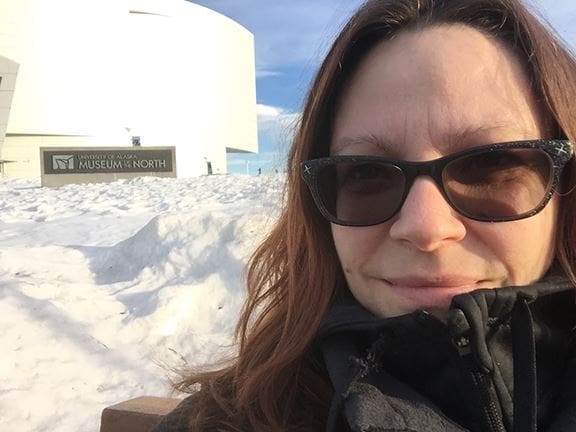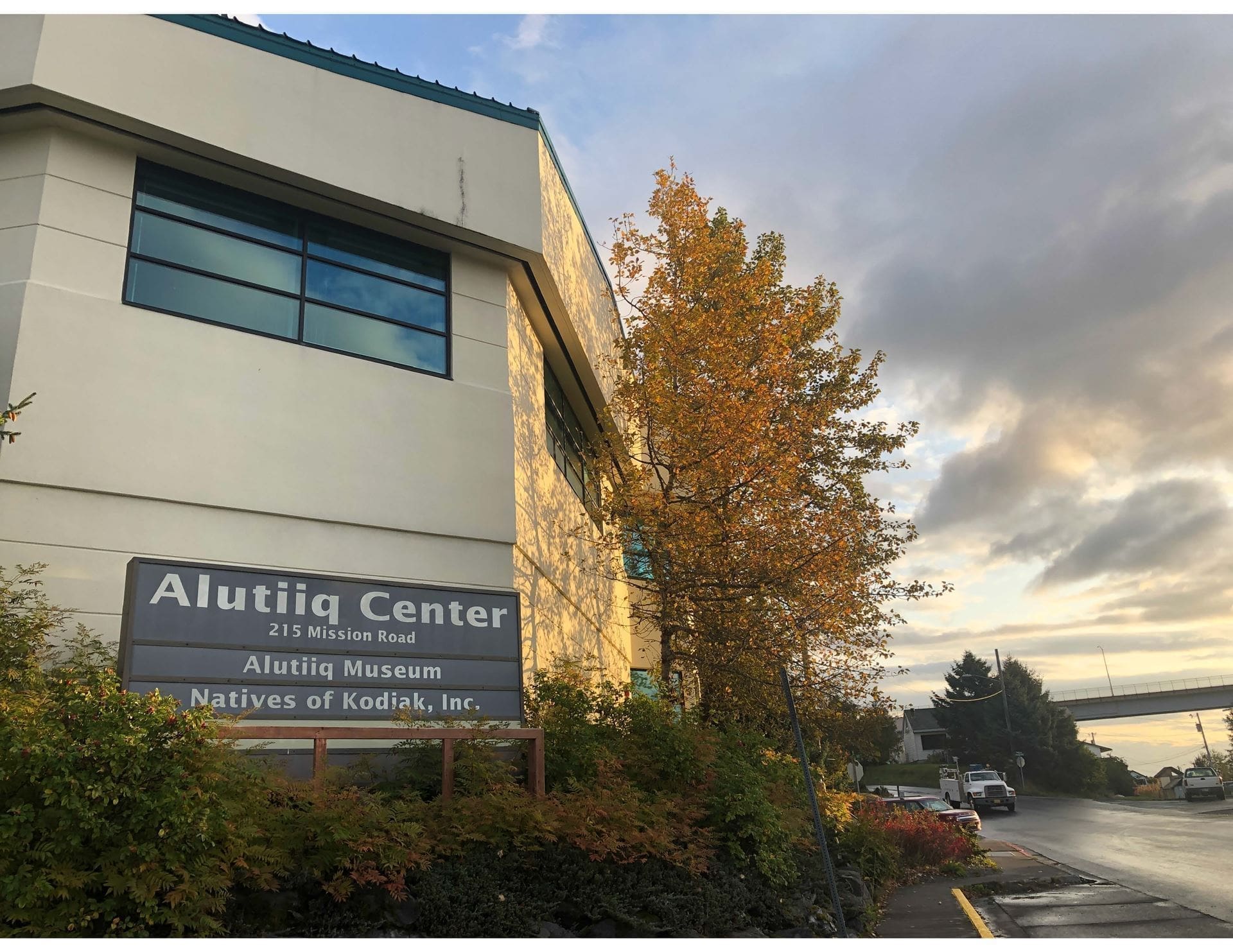This article was written by 2019 Donna Matthews Professional Development Fund Scholarship recipient Angela Linn. Read more from Angela on her blog here.
 The 2019 Museums Alaska / Alaska Historical Society Joint Annual conference marked the 20-year anniversary of my first trip to Kodiak. Back in September of 1999, I was fortunate enough to receive funding to attend a workshop co-hosted by the Smithsonian’s Center for Museum Studies and the Alutiiq Museum and Archaeological repository, entitled “MUSEUMS and NATIVE PEOPLE: Audiences, Community and Collaborations.” At that time, I was literally just transitioning from being a 27-year-old graduate student assistant working for the University of Alaska Museum part time, to being a full-time benefitted staff member – my first “real” professional job. Looking through my pages of notes and the printed agenda with articles shared during that workshop, I find it compelling that many of those topics continue to be important today and in fact, were echoed at many of the Museums Alaska sessions I attended.
The 2019 Museums Alaska / Alaska Historical Society Joint Annual conference marked the 20-year anniversary of my first trip to Kodiak. Back in September of 1999, I was fortunate enough to receive funding to attend a workshop co-hosted by the Smithsonian’s Center for Museum Studies and the Alutiiq Museum and Archaeological repository, entitled “MUSEUMS and NATIVE PEOPLE: Audiences, Community and Collaborations.” At that time, I was literally just transitioning from being a 27-year-old graduate student assistant working for the University of Alaska Museum part time, to being a full-time benefitted staff member – my first “real” professional job. Looking through my pages of notes and the printed agenda with articles shared during that workshop, I find it compelling that many of those topics continue to be important today and in fact, were echoed at many of the Museums Alaska sessions I attended.
Our keynote address on Thursday morning by Cinnamon Catlin-Legutko entitled “Discomfort & Renewal: Decolonizing the Museum” introduced many in the room to the concept of decolonization. This is a sometimes-controversial approach to various disciplines that seeks to transform institutions created by western power structures by acknowledging centuries of abuse at worst, and systematic exclusion at best. Catlin-Legutko described her personal experiences at the Abbe Museum in Bar Harbor, Maine as she worked with her board to eventually arrive at an organizational process aimed at sharing authority, privileging local knowledge, and truth-telling for the local Wabenaki people. As I review my notes from that keynote and compare them to those from the 1999 workshop, similar concepts catch my eye. The Indigenous participants at the workshop expressed a desire to represent their own stories in their own words, but recognized not everyone in their communities had the same perspective of that shared history. Alaska’s communities grapple with our colonial history, manifested as often battling perspectives on the Russian occupation, the value or detriment of European and American anthropologists and collectors removing early examples of material culture, assimilative education policies including English-only boarding schools, and the generational trauma resulting from those 150+ years of mistreatment and restriction of power. Catlin-Legutko reminded us that decolonization is one of many processes and approaches we might employ to make our museums, and communities, more diverse, equitable, accessible, and inclusive. Museums and their staff operate from a position of privilege and often within a structure that (perhaps unknowingly) has supported institutional racism over the years. Participants in my 1999 workshop reminded each other that first we must avoid exclusion, and only then can we move on to inclusion. It’s a subtle but important distinction that is worth our time to consider deeply.
Ellen Carrlee’s excellent session on “Indigenous Participatory Collections Care” was the perfect follow-up session to the keynote, with her insightful and introspective examination of the traditional field of conservation and their thirteen points from AIC’s Code of Ethics and Guidelines for Practice. Ellen provided a number of examples from Alaska museums where conservation projects employed a collaborative approach with local and Indigenous knowledge holders to both promote a high level of collections care while also respecting traditional approaches and needs of Indigenous community members. She admitted to her own feelings of discomfort over a Chilkat robe project where her local weaver took a more aggressive approach to the care of the tassels than Ellen was prepared for. This served as an excellent example of how, as part of the decolonizing approach advocated for by many professionals, we can learn to give up some control over our collections and share authority with those whose knowledge can provide a more culturally-appropriate way to achieve our mission. The 1999 workshop attendees suggested museums come up with projects to break down barriers, and that the use of local experts for highly specialized tasks like this acknowledges that oral and practiced knowledge is as valid as that gained through academic and professional training.
As a current Interdisciplinary PhD candidate at UAF working on a museum studies project, I was particularly interested to hear from Selena Ortega-Chiolero and Bethany Buckingham-Follett in their session entitled “Spirit and Vision at IAIA: An Indigenous Approach to the Field of Museum Studies.” They were joined telephonically by Asst. Professor and Department Chair Felipe Estudillo Colón from Santa Fe as he presented the guiding principles and goals of the museum studies program at the Institute of American Indian Arts (IAIA). This unique undergraduate and online certificate program centers their philosophy on teaching a balance of practical skills needed to become a museum professional while encouraging their students’ ability to analyze various models of cultural stewardship. Faculty foster the exploration of “uncharted and expressive directions in the field of museology” while giving opportunities for hands-on learning in a wide range of museum settings. Both Selena and Bethany spoke with excitement about the online program as an opportunity to expand their knowledge in museology on their own time, while specifically being provided with examples centered in Indigenous cultural centers rather than the standard western museums often cited in traditional museological texts. The AIAI program is inspiring as we at UAF look at re-invigorating our Museum Studies courses and consider how we can create a curriculum firmly based in northern topics, including Alaska Native pedagogy.
In considering such work, I am inspired again by the attendees of the 1999 workshop who suggested concrete actions to help museum staff be more culturally-responsive:
- take into account the possible spiritual needs of objects in the collection and the potential for conflicting perspectives;
- reconsider the use of western-centric terms like “prehistory” and “informants” in favor of terms such as “ancient history” and “collaborator / co-author”; and
- presenting the complexity of contemporary Indigenous perspectives and the need for self-representation.
These suggestions sound very similar to what our keynote speakers, Cinnamon Catlin-Legutko and 1999 workshop attendee Sven Haakanson, Jr., promoted in their final panel together: consider who we, as museum professionals, are serving and how we can prioritize their needs. Museum professionals of the 21st century must be true to our mission, while also creating safe spaces for diverse audiences, avoid exclusion, demand accessibility, and seek out opportunities for equity. It is no small task – but I have confidence in my Alaska peers that we are fully capable of not just meeting these demands, but of leading the way.
 The Alutiiq Building, home of the Alutiiq Museum and Archaeological Repository.
The Alutiiq Building, home of the Alutiiq Museum and Archaeological Repository.